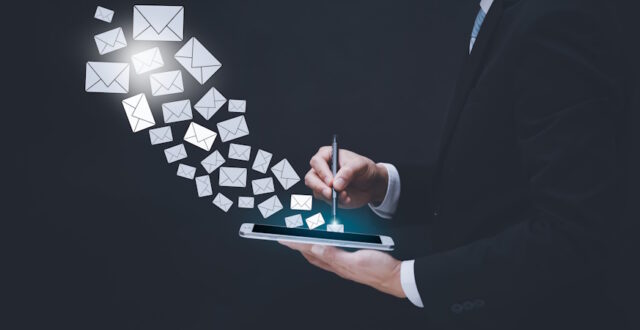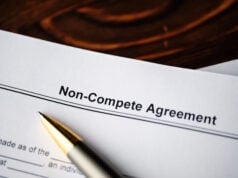
By Marie Haaland // SWNS
The average employee spends 10 hours and 47 minutes a week drafting emails that few recipients read, according to new research.
The survey of 8,000 small business employees (split evenly between Americans and Brits) asked respondents how much time they spend on emails: they draft an average of 112 emails a week, spending just over five and a half minutes on each.
But small business employees surveyed believe their emails are only fully read and understood by their recipients a third (36%) of the time.
This might explain why respondents said that when their email is responded to, it’s common to have their questions not be answered (62%), to be addressed by the wrong name (51%) or to be asked a question they just answered (49%).
Respondents are aware they’re guilty of not reading emails, too: over half (57%) admitted that if an email is “too long” — eight or more sentences — they won’t bother reading the whole thing.
With that, small business employees delete, or otherwise don’t read, an email based solely on the subject line an average of eight times per day.
This is detrimental for employees: 45% have missed something (like a deadline, a meeting, etc.) because they didn’t read an important email.
Commissioned by Slack and conducted by OnePoll, the survey delved further into email and explored what alternatives small business employees would like to see for workplace communication.
Almost half (46%) of respondents said that email is an “outdated form of communication.”
Some of their frustration comes from losing emails to the spam or junk folders (53%), or their inbox being clogged with emails that aren’t relevant to them (50%) — others said it’s easy to misconstrue tone over email (47%) and there’s an expectation of staying “formal” (45%).
When it comes to staying “formal,” younger generations were more likely to see that as an expectation and find it a challenge. Results found 57% of Gen Zers and 46% of millennials agreed, while only 37% of Gen X and 34% of baby boomers said the same.
There was also a direct correlation between age and feeling like emails are a waste of time. Younger respondents were more likely to say emails are not worth it (41% of Gen Z and 38% of millennials) compared to older generations (30% of Gen X and 22% of baby boomers).
“When we look at the data, we’re seeing that employees are spending almost 11 hours a week writing emails,” said Ali Rayl, SVP Product Management, Slack. “Many of these emails aren’t even getting read, and when they are, research shows that they’re often skimmed too quickly and misunderstood.
“It’s an outdated, inefficient form of communication that isn’t keeping up with the way companies work today. Companies that adopt more efficient ways for their employees to communicate are freeing up time for more productive, meaningful work.”
Respondents believe their company relies on email because it’s inexpensive (55%) and it’s the way things have always been done (53%) — a third (34%) also said it’s because the small business they work for is unaware of other tools.
Over half (57%) feel bogged down at work because of menial tasks like sending emails — with most generations sharing that sentiment (59% of Gen Zers, 60% of millennials and 52% of Gen X surveyed).
When asked which menial tasks make it harder to succeed in their role, respondents pinpointed the top three as filtering irrelevant emails (51%), responding to emails (47%) and finding internal information they need for my role (38%).
With email-related tasks coming out first and second, perhaps it isn’t surprising that 36% of small business employees said their productivity would be positively impacted if their company relied less on email.
The survey also found that 46% believe using email means their company is lagging behind with technology, and half (49%) would like their company to move from email to other forms of communication.
Interestingly, that’s not the only thing respondents would like to see from their company, in order to increase their productivity.
Forty-two percent believe AI tools will increase their productivity — while only 9% of respondents said it would negatively affect their productivity.
Receiving immediate answers was seen by respondents as the top appeal for AI (50%), followed by staying competitive with other companies (47%) and replacing manual and repetitive tasks (47%).
“The structure of work today is profoundly different from what jobs looked like in the past; we now have productivity platforms and job-specific tools at our fingertips to help us make the most of our time and talents,” said Rayl. “When we integrate our workplace — the way we communicate and the tools we use to get work done, which increasingly includes AI — we foster deeper connection, quicker communication, greater clarity through shared context, and overall, we waste less time.
“Information can’t fall through the cracks when there’s one single place where everyone in a company can go to find information.”
WHAT DO RESPONDENTS FIND CHALLENGING, WHEN USING EMAIL?
- Important emails can go to spam or junk — 53%
- My inbox is easily clogged by emails that aren’t relevant to me — 50%
- It’s easy to misconstrue tones — 47%
- There’s an expectation of staying “formal” — 45%
- I’m not able to remove myself from email chains — 29%
- I can’t find the right information because it’s buried in an email thread — 24%
- I haven’t been cc’d on emails or into threads with key information — 24%
- It takes too long to get a reply/response — 18%
- Different platforms make sending attachments difficult — 12%
- My inbox has become unmanageable — 12%
Respondents send an average of 22.3 emails a day x 5 days in an average workweek = 111.5 emails per week x 5.8 minutes drafting each email = 646.7 minutes per week or 10 hours and 47 minutes per week drafting emails.
Survey methodology:
This random double-opt-in survey of 8,000 respondents — employees of small businesses with less than 200 employees; desk-based workers, a mix of in-office, hybrid, and remote who send/receive emails — was commissioned by Slack between Aug. 11 and Aug. 31, 2023.
It was conducted by market research company OnePoll, whose team members are members of the Market Research Society and have corporate membership to the American Association for Public Opinion Research (AAPOR) and the European Society for Opinion and Marketing Research (ESOMAR).
This article originally appeared here and was republished with permission.













